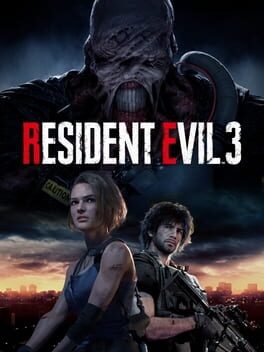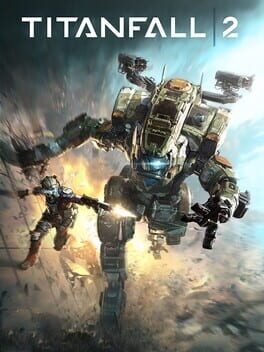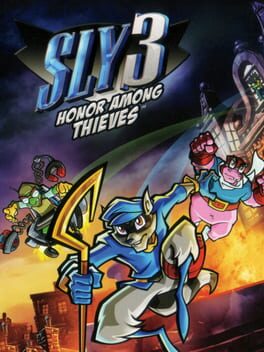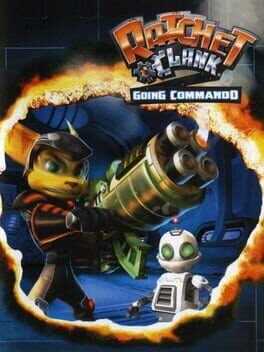jebhappy
2020
As I've written about before, the AAA industry has a problem with archival. Particularly Sony whose rash decision to shut down the PS Store on PS3 and Vita early this year (which they've fortunately since backpedaled on) indicates an increasing disregard for classic releases and franchises, deeming them archaic and insignificant. Capcom's recent remakes of their beloved Resident Evil sequels further emphasizes this unnecessary drive to replace games of old with new shiny products, no matter how the product turns out.
And boy does Resident Evil 3 turn out. Gone are the gorgeous, illusory Raccoon City streets and alleyways, the cacophonous mess of textures and colors which simultaneously confound and entice. And gone is the enduring Nemesis, replaced with a hulking setpiece gimmick who only appears to add some flair to the otherwise trivial, frustratingly linear gameplay.
The Resident Evil series once intimidated players with its multi-layered adventure-style design, luring them in with tactical action and subduing them with engaging back-and-forth puzzles. In REmake 3, Jill runs around a miniature map, shooting the same zombies and grabbing superfluous items to place in other specific areas, before moving along to the next forced interaction with Carlos and company. Never before has a main entry in this series felt so redundant, and the idea that this remake is intended to essentially replace the terrifically beautiful original is insulting.
By the halfway point, the developers have all but checked out, stringing the player along a distinctly devised route from point A to B with little to nothing keeping them engaged. This is survival horror for Call of Duty addicts; a mindless exercise in gunplay prettied up by some admittedly gorgeous environments and satisfying action against a few interesting enemy designs. But even the morbid hospital scene feels devoid of character, when it should serve a hauntingly prescient portrait to mirror our post-COVID era.
Often the remake functions like the antithesis to its predecessor. Elaborate and iconic settings like the clocktower level and the giant worm boss fight are absent. Every scene frankly seems to only be included for the sake of filling in time before the next uninspired Nemesis -- more like Nemesus -- encounter. It's a horror game devoid of spooks, and an action game devoid of excitement; proof Capcom likely have no clue what makes their original property so immortal.
Mikhail presents one of the most unenthusiastic villains in games history. As Jill's final monologue concludes, greed is the true enemy which has undone an entire city; but the utter lack of a logical antagonistic entity proves this message fruitless. Mikhail never seems to have any clear motivation besides selfishness; even COVID deniers and anti-vaxxers have a (false) cause to defend.
In the original RE3, Nemesis connoted rape and stalker culture, as it relentlessly pursued a lone woman amidst dark city streets where law has all but dissipated. In the remake, Nemesus is nothing but a trite bundle of polygons, exponentially expanding throughout, until a final underwhelming confrontation proves Capcom have pretty much run out of tricks. "Bitch can't swim," just about sums this mess up.
https://pig.gg/the-games-industry-has-a-preservation-problem/
And boy does Resident Evil 3 turn out. Gone are the gorgeous, illusory Raccoon City streets and alleyways, the cacophonous mess of textures and colors which simultaneously confound and entice. And gone is the enduring Nemesis, replaced with a hulking setpiece gimmick who only appears to add some flair to the otherwise trivial, frustratingly linear gameplay.
The Resident Evil series once intimidated players with its multi-layered adventure-style design, luring them in with tactical action and subduing them with engaging back-and-forth puzzles. In REmake 3, Jill runs around a miniature map, shooting the same zombies and grabbing superfluous items to place in other specific areas, before moving along to the next forced interaction with Carlos and company. Never before has a main entry in this series felt so redundant, and the idea that this remake is intended to essentially replace the terrifically beautiful original is insulting.
By the halfway point, the developers have all but checked out, stringing the player along a distinctly devised route from point A to B with little to nothing keeping them engaged. This is survival horror for Call of Duty addicts; a mindless exercise in gunplay prettied up by some admittedly gorgeous environments and satisfying action against a few interesting enemy designs. But even the morbid hospital scene feels devoid of character, when it should serve a hauntingly prescient portrait to mirror our post-COVID era.
Often the remake functions like the antithesis to its predecessor. Elaborate and iconic settings like the clocktower level and the giant worm boss fight are absent. Every scene frankly seems to only be included for the sake of filling in time before the next uninspired Nemesis -- more like Nemesus -- encounter. It's a horror game devoid of spooks, and an action game devoid of excitement; proof Capcom likely have no clue what makes their original property so immortal.
Mikhail presents one of the most unenthusiastic villains in games history. As Jill's final monologue concludes, greed is the true enemy which has undone an entire city; but the utter lack of a logical antagonistic entity proves this message fruitless. Mikhail never seems to have any clear motivation besides selfishness; even COVID deniers and anti-vaxxers have a (false) cause to defend.
In the original RE3, Nemesis connoted rape and stalker culture, as it relentlessly pursued a lone woman amidst dark city streets where law has all but dissipated. In the remake, Nemesus is nothing but a trite bundle of polygons, exponentially expanding throughout, until a final underwhelming confrontation proves Capcom have pretty much run out of tricks. "Bitch can't swim," just about sums this mess up.
https://pig.gg/the-games-industry-has-a-preservation-problem/
2016
EUREKA!
It's rather fitting how every human NPC in Titanfall 2 is nearly indistinguishable from the robot NPCs, standing around trapped in subtle loops to feign activity. For a game that wants the player to develop a certain relationship with the inhuman Titan their blank canvas protagonist pilots, it certainly lacks a sense of genuine spirit, despite the evocative otherworldly landscapes that suggest complex, living paintings.
Titanfall 2 has been praised as being a subversive shooter, but the monotonous gameplay proves otherwise, only adding a few extra abilities to race through compulsively and incessantly. The Titan sequences are explosive and offer a multitude of weapon types but there's little to no tactical variance besides shooting and dodging, which is nothing more or less than the standard run-and-gun action throughout the rest of the game. Yet Titanfall 2 accomplishes quite a whole lot with its storytelling than it may lead one to believe.
One genuinely brilliant level bridges the past and present like a DNA strand, suggesting a history of technological advancement and human folly bringing ruin. The player jumps back and forth between time as often as they do between walls during the simplistic platforming sections (which take up about as much playtime as the shooting sections). But during this particular level, time isn't so much bridged together as it is disregarded entirely, as the player moves through a linear scenario using their new ability, overcoming obstacles by the simple press of a button.
It's evocative of all art's understanding of existence as a liminal space, and videogames especially offer a playground for the mind to escape outside of the boundaries constricting reality to a linear phase. In Titanfall 2, the player is still nearly-mindlessly shooting hostile targets, and while some are living they are identical to those which are not, habitually positing an evaluation of the medium's predilection to violence (especially when it's as accessible and satisfying as it is here), going so far as to directly confront this virtual reality persona with a sequence set inside a battleground simulation hosted by a faceless villain who throws enemies at them to destroy.
Titanfall 2 (mostly) works because it's not trying to be provocative or an intelligent deconstruction, but it sort of really is regardless. The game never acts as if the player's responses to BT, whether rude or companionable, make a difference in the linear scope of it all. Or whether or not there will be narrative "repercussions" for slaughtering every innocuous robot they come across. But these subtle moments might just prompt one to question their relationship with these various targets they come across, whether threatening or not, and the game's blockbuster charm buoys the carnage to keep it from ever becoming too self-serious for its own good -- a modern problem which plagues numerous AAA titles. For that, Titanfall 2 is something of a relief in an era dominated by faux drama and cutscene-laden excitement which frustratingly wrestles control away from the player.
Above all, however, Titanfall 2 is most striking for how miniscule the player-character appears, as they stare out at the wide atmosphere, planets ripping apart above, debris and comets raining down throughout the pinkish blue of the day. Few blockbuster releases have such a rousing sense of scale and spectacle; for a game that makes one feel like a superhero, its magnificent presentation is surprisingly down to earth.
Emotion is fleeting in Titanfall 2; Cooper and BT's budding friendship is not only cornily inevitable, it's a necessity in these wartorn times where the divide separating the living and the inhuman is dwindling. Arks and Marders and leaps of faith point towards an emphatic truth regarding human development: God is alive in allyship even amongst the most damned and doomed combat zones.
It's rather fitting how every human NPC in Titanfall 2 is nearly indistinguishable from the robot NPCs, standing around trapped in subtle loops to feign activity. For a game that wants the player to develop a certain relationship with the inhuman Titan their blank canvas protagonist pilots, it certainly lacks a sense of genuine spirit, despite the evocative otherworldly landscapes that suggest complex, living paintings.
Titanfall 2 has been praised as being a subversive shooter, but the monotonous gameplay proves otherwise, only adding a few extra abilities to race through compulsively and incessantly. The Titan sequences are explosive and offer a multitude of weapon types but there's little to no tactical variance besides shooting and dodging, which is nothing more or less than the standard run-and-gun action throughout the rest of the game. Yet Titanfall 2 accomplishes quite a whole lot with its storytelling than it may lead one to believe.
One genuinely brilliant level bridges the past and present like a DNA strand, suggesting a history of technological advancement and human folly bringing ruin. The player jumps back and forth between time as often as they do between walls during the simplistic platforming sections (which take up about as much playtime as the shooting sections). But during this particular level, time isn't so much bridged together as it is disregarded entirely, as the player moves through a linear scenario using their new ability, overcoming obstacles by the simple press of a button.
It's evocative of all art's understanding of existence as a liminal space, and videogames especially offer a playground for the mind to escape outside of the boundaries constricting reality to a linear phase. In Titanfall 2, the player is still nearly-mindlessly shooting hostile targets, and while some are living they are identical to those which are not, habitually positing an evaluation of the medium's predilection to violence (especially when it's as accessible and satisfying as it is here), going so far as to directly confront this virtual reality persona with a sequence set inside a battleground simulation hosted by a faceless villain who throws enemies at them to destroy.
Titanfall 2 (mostly) works because it's not trying to be provocative or an intelligent deconstruction, but it sort of really is regardless. The game never acts as if the player's responses to BT, whether rude or companionable, make a difference in the linear scope of it all. Or whether or not there will be narrative "repercussions" for slaughtering every innocuous robot they come across. But these subtle moments might just prompt one to question their relationship with these various targets they come across, whether threatening or not, and the game's blockbuster charm buoys the carnage to keep it from ever becoming too self-serious for its own good -- a modern problem which plagues numerous AAA titles. For that, Titanfall 2 is something of a relief in an era dominated by faux drama and cutscene-laden excitement which frustratingly wrestles control away from the player.
Above all, however, Titanfall 2 is most striking for how miniscule the player-character appears, as they stare out at the wide atmosphere, planets ripping apart above, debris and comets raining down throughout the pinkish blue of the day. Few blockbuster releases have such a rousing sense of scale and spectacle; for a game that makes one feel like a superhero, its magnificent presentation is surprisingly down to earth.
Emotion is fleeting in Titanfall 2; Cooper and BT's budding friendship is not only cornily inevitable, it's a necessity in these wartorn times where the divide separating the living and the inhuman is dwindling. Arks and Marders and leaps of faith point towards an emphatic truth regarding human development: God is alive in allyship even amongst the most damned and doomed combat zones.
2021
"No other developer from the past decade has been so studiously compelled by the storytelling potential of cooperative play, and It Takes Two is now their crowning achievement. Endlessly creative, the game dispels traditional gameplay loops to revel in the immediacy of collaborative puzzle-solving, and most importantly the symbolic effects governing their narrative significance. The result is a co-op game about co-op games, a deeply reflective work inspired by numerous genres from platformers to 3D shooters to hack-and-slash RPGs and even fighting games."
You can read my full review here:
https://pig.gg/it-takes-two-is-an-endlessly-creative-ode-to-romantic-cooperation/
You can read my full review here:
https://pig.gg/it-takes-two-is-an-endlessly-creative-ode-to-romantic-cooperation/
This review contains spoilers
EUREKA!
Sly, Bentley, and Murray present three parts to a whole -- the ego, the superego, and the id; but more emotionally speaking, they forge a brotherhood based in honor and commitment. Sly's pursuit of the riches of his past, his legacy wrought in gold, pertains to his personal quest for identity.
The three are a close-knit family, which has been established ever since the first game introduced them as orphanage pals-- abandoned children from far different backgrounds who find stability in each other's company and their shared exploits. Thievery compels their wits and passion for action (and our own), and offers the protagonist an ethnic identification for him to latch onto. Sly 3 rises above typical sequel obligation by offering solace and development through redemptive episodes.
Familiar series baddies like Dimitri and Panda King are recruited to the Cooper Gang, and even the exhibitionist Baron turns out to be brainy Penelope hiding behind a dastardly facade. Panda King's episode especially considers the very significant act of self-actuated renewal, particularly during one scene where he has an internal monologue with his reflection, in a rousing display of autonomous emotional consolidation. It is wildly ambitious writing for a game aimed for younger audiences, with a wonderful lesson on the importance of enacting personal growth. Growth is a choice governed by one's emotive maturation.
Carmelita as well eventually comes around to acknowledging Sly's inherent goodness, despite his criminal activities, because ultimately his team's ventures prove a morally sound expedition into ancestral discovery. Love lights the way forward towards cooperation and unity-- Sly 3 presents a refutation of division in a world full of strife.
These thieves take down the egotists who give thieving and sleuthing a bad name. They are ethically-disinclined protectors of the world they inhabit, whether relieving the poisoned waters of Venice, clearing out a company of miners from the Australian outback, or thwarting a malicious Chinese emperor's forced marriage plot. Don Octavio, General Tsao, Dr. M, these nefarious villains each represent a cruel, imperious narcissism, which Sly and the gang offer a karmic retort to; and the gameplay (which revolves around carrying out cunning schemes with grand, fulfilling realisation) fittingly corresponds.
Dr. M deems himself the mirror image to Sly's selfless crusade, going so far as to implicate Bentley by comparing them to each other. But Bentley perceives his friend's loving companionship and exposes the antagonist's insecurity. There is a real beauty to the game's progression as new playable characters are introduced, meaning new abilities are unlocked for new interactive playstyles, conditioning this developing team as a singular unit, glued together by the player's input.
One could talk for hours about the game's endless variety of settings and playstyles. The fifth chapter, Dead Men Tell No Tales certainly comes across as ahead-of-its-time (would Assassin's Creed: Black Flag exist without this game??). Though, for as -- surprisingly -- intelligently the script considers its characters, it's a shame Penelope only ever serves as a token female character in a plot dominated by male-centric invention. She's either a brainless love interest or a damsel in distress for most of the cutscenes, unfortunately.
Regardless, Sucker Punch have once again succeeded in melding the weighty action adventure of Saturday morning cartoons with a visual style that suggests a vibrant comic book in motion. For as playful the design is, the writing beautifully grounds this story of anthropomorphic animals seeking out their most ideal selves. Sly 3 commends honor in the face of authoritative greed, making it one of the most sophisticated and inspiring children's games ever conceived.
Sly, Bentley, and Murray present three parts to a whole -- the ego, the superego, and the id; but more emotionally speaking, they forge a brotherhood based in honor and commitment. Sly's pursuit of the riches of his past, his legacy wrought in gold, pertains to his personal quest for identity.
The three are a close-knit family, which has been established ever since the first game introduced them as orphanage pals-- abandoned children from far different backgrounds who find stability in each other's company and their shared exploits. Thievery compels their wits and passion for action (and our own), and offers the protagonist an ethnic identification for him to latch onto. Sly 3 rises above typical sequel obligation by offering solace and development through redemptive episodes.
Familiar series baddies like Dimitri and Panda King are recruited to the Cooper Gang, and even the exhibitionist Baron turns out to be brainy Penelope hiding behind a dastardly facade. Panda King's episode especially considers the very significant act of self-actuated renewal, particularly during one scene where he has an internal monologue with his reflection, in a rousing display of autonomous emotional consolidation. It is wildly ambitious writing for a game aimed for younger audiences, with a wonderful lesson on the importance of enacting personal growth. Growth is a choice governed by one's emotive maturation.
Carmelita as well eventually comes around to acknowledging Sly's inherent goodness, despite his criminal activities, because ultimately his team's ventures prove a morally sound expedition into ancestral discovery. Love lights the way forward towards cooperation and unity-- Sly 3 presents a refutation of division in a world full of strife.
These thieves take down the egotists who give thieving and sleuthing a bad name. They are ethically-disinclined protectors of the world they inhabit, whether relieving the poisoned waters of Venice, clearing out a company of miners from the Australian outback, or thwarting a malicious Chinese emperor's forced marriage plot. Don Octavio, General Tsao, Dr. M, these nefarious villains each represent a cruel, imperious narcissism, which Sly and the gang offer a karmic retort to; and the gameplay (which revolves around carrying out cunning schemes with grand, fulfilling realisation) fittingly corresponds.
Dr. M deems himself the mirror image to Sly's selfless crusade, going so far as to implicate Bentley by comparing them to each other. But Bentley perceives his friend's loving companionship and exposes the antagonist's insecurity. There is a real beauty to the game's progression as new playable characters are introduced, meaning new abilities are unlocked for new interactive playstyles, conditioning this developing team as a singular unit, glued together by the player's input.
One could talk for hours about the game's endless variety of settings and playstyles. The fifth chapter, Dead Men Tell No Tales certainly comes across as ahead-of-its-time (would Assassin's Creed: Black Flag exist without this game??). Though, for as -- surprisingly -- intelligently the script considers its characters, it's a shame Penelope only ever serves as a token female character in a plot dominated by male-centric invention. She's either a brainless love interest or a damsel in distress for most of the cutscenes, unfortunately.
Regardless, Sucker Punch have once again succeeded in melding the weighty action adventure of Saturday morning cartoons with a visual style that suggests a vibrant comic book in motion. For as playful the design is, the writing beautifully grounds this story of anthropomorphic animals seeking out their most ideal selves. Sly 3 commends honor in the face of authoritative greed, making it one of the most sophisticated and inspiring children's games ever conceived.
This review contains spoilers
The international arms race has reached beyond the stars. Galaxies are in constant battle for no other reason besides an almost primeval incentive to destroy and conquer. Ratchet & Clank: Going Commando is primarily a satire on the military-industry complex that began gradually subsuming all of America's foreign affairs back in the early aughts; Megacorp presents a capitalistic takeover that stretches far far far outside of Earth, and pitting the player in the shoes of the corporation's most capable and destructive lackeys sets up a meandering plot where the running gag suggests oblivious culpability.
There's a real Ah-a! moment as soon as the assumed villain mentions the player's capitalist devotion, offering a mode of tragic irony unique to games, to keep us invested without doubting our intellect. From there on, the klutz of a CEO, Fizwidget consistently kookily edges Ratchet and Clank down an endless path through barren landscapes once lush with Life, and the ruins of Megacorp's fallen predecessor, Gadgetron. The cutscenes infer the comic, while traversal offers something subtly harrowing to consider.
Truly, Going Commando houses one of the most fully-realised, thoughtfully-constructed game universes on the PS2. Each planet the titular duo travel to is itself is a dazzling display of deliberate level design and worldbuilding. The weapons and gadgets are a joy to unlock, learn, and level up (it was the premier era of minigame inventiveness), and bolts once again prove a deviously cunning take on currency and XP systems. Going Commando is RPG-lite, and by the final epic boss fight it's clear how intuitive the player-character's development is in tune with the player's own sense of accomplished play.
The world of Ratchet and Clank is dominated by industry and metal; bolts lay the foundation of this boundless capitalist kingdom. By reveling in the carnage of the gameplay and the money-hungry delight of retrieving bolts, the player relinquishes to the chaos of this galactic wild west, a planetscape trapped in stasis by the explosive effect of its own ebullient incentive. Ratchet may have matured since the first game, as a man and a soldier, but his mindless destructive tendencies still indicate an id unleashed (typified whenever he dons a devious smile after pulling out a massive gun).
It's a shame then that the climactic plot twist all but contradicts the underlying sly satire of it all, positing the greed-driven CEO as a cartoon villain in disguise, seemingly just to rope Qwark back in for the sequel. The real Fizwidget is freed during the final cutscene, and from there, everything seems to go back to normal after the credits roll, or so we can infer.
Going Commando's driving plot, involving a race of uncontrollable monster pets, funnily encapsulates consumerist America's obsession with rapidly-evolving technology at whatever cost; the final reveal disregards the entire point. Regardless, this sequel stands as a mightily fulfilled exercise in brainy brawlers; a suitable exemplar of sixth generation developers' devotion to craft and concept. The revelry is the mode is the message.
There's a real Ah-a! moment as soon as the assumed villain mentions the player's capitalist devotion, offering a mode of tragic irony unique to games, to keep us invested without doubting our intellect. From there on, the klutz of a CEO, Fizwidget consistently kookily edges Ratchet and Clank down an endless path through barren landscapes once lush with Life, and the ruins of Megacorp's fallen predecessor, Gadgetron. The cutscenes infer the comic, while traversal offers something subtly harrowing to consider.
Truly, Going Commando houses one of the most fully-realised, thoughtfully-constructed game universes on the PS2. Each planet the titular duo travel to is itself is a dazzling display of deliberate level design and worldbuilding. The weapons and gadgets are a joy to unlock, learn, and level up (it was the premier era of minigame inventiveness), and bolts once again prove a deviously cunning take on currency and XP systems. Going Commando is RPG-lite, and by the final epic boss fight it's clear how intuitive the player-character's development is in tune with the player's own sense of accomplished play.
The world of Ratchet and Clank is dominated by industry and metal; bolts lay the foundation of this boundless capitalist kingdom. By reveling in the carnage of the gameplay and the money-hungry delight of retrieving bolts, the player relinquishes to the chaos of this galactic wild west, a planetscape trapped in stasis by the explosive effect of its own ebullient incentive. Ratchet may have matured since the first game, as a man and a soldier, but his mindless destructive tendencies still indicate an id unleashed (typified whenever he dons a devious smile after pulling out a massive gun).
It's a shame then that the climactic plot twist all but contradicts the underlying sly satire of it all, positing the greed-driven CEO as a cartoon villain in disguise, seemingly just to rope Qwark back in for the sequel. The real Fizwidget is freed during the final cutscene, and from there, everything seems to go back to normal after the credits roll, or so we can infer.
Going Commando's driving plot, involving a race of uncontrollable monster pets, funnily encapsulates consumerist America's obsession with rapidly-evolving technology at whatever cost; the final reveal disregards the entire point. Regardless, this sequel stands as a mightily fulfilled exercise in brainy brawlers; a suitable exemplar of sixth generation developers' devotion to craft and concept. The revelry is the mode is the message.




